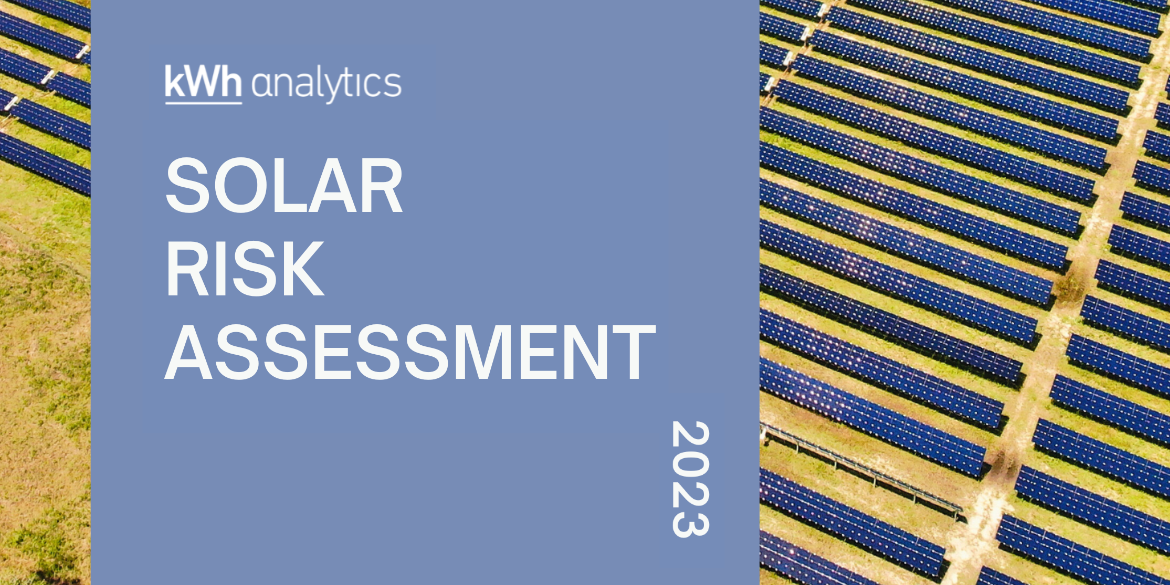According to the fifth annual edition of kWh Analytics’ Solar Risk Assessment report, the solar industry is forecast to build as much solar capacity in the next five years as the prior twenty years combined. That’s a remarkable outlook for the future of solar. While we’re more informed than ever when it comes to assessing the risk of solar PV projects, the report highlights future challenges, and solutions, to support sustainable growth.
In addition to our contribution, this year’s report includes articles from kWh Analytics, RETC, PVEL, Bloomberg NEF, Wood Mackenzie, ICF, Raptor Maps, NREL, EnergySage and Envision Digital, and focuses on three key risk areas:
- Extreme weather risk from hail, which is being addressed through continued improvements in PV materials and preemptive hail stow approaches
- Financial modeling risks resulting in underestimation of modeling uncertainty, in large part due to failure to account for equipment-related issues
- Operational risk from equipment underperformance and clipping losses, and a growing skilled labor gap are increasing costs, even as material costs decline
Reducing clipping loss errors in PV production modeling with high-resolution solar resource data
This year, Clean Power Research contributed an article highlighting how the use of high-resolution sub-hourly solar resource data in PV production modeling reduces errors associated with clipping losses. While hourly resolution PV modeling is still the industry standard, research indicates that it’s insufficient to inform critical PV financing decisions. This is particularly true for systems with large DC:AC ratios, and at locations with high weather variability. In fact, recent research shows that hourly data can overpredict AC energy by up to 1.5% to 4% annually, depending on the system design and location.
Because fast-moving clouds can cause transient fluctuations in PV power production over sub-hourly timescales, hourly modeling is inadequate at capturing sub-hourly ramps. Alternative approaches such as the use of annual or monthly clipping loss correction factors can miss the effect of seasonality and diurnal shape on clipping losses and AC output.1
The adoption of sub-hourly PV simulations has been limited by the availability of site-specific solar data appropriate for sub-hourly modeling. SolarAnywhere® is using the latest generation of GOES satellites to now offer high-resolution solar data at 5-minute, 500-meter nominal native resolution across the continental United States. The high-resolution data variability is further augmented with True Dynamics™, a unique methodology developed by Dr. Richard Perez and his team to capture large, intra-hourly ramp rates and clear-sky exceedance events that are not evident in hourly-averaged data (Fig 1).
Figure 1: Time-series Simulation using SolarAnywhere Hourly and 5-minute TD, and 1-minute Observed Data
In internal testing, 5-minute simulations with True Dynamics data reduced clipping loss errors by more than 90% versus hourly data for high DC:AC scenarios.
Site-specific, sub-hourly solar data enables developers to get more realistic P50/P90 energy estimates and support designs that deliver cost-effective firm power, regardless of the weather. Additionally, the use of sub-hourly solar data with hindcasts to evaluate battery dispatch and firming strategies can help solar developers optimize hybrid solar-plus-storage plant design to provide essential grid balancing services and meet ramping and smoothing requirements.
kWh Analytics’ Solar Risk Assessment report
The Solar Risk Assessment report is designed to provide an objective, data-driven assessment of the evolution of solar, and is published by kWh Analytics to share the work teams throughout the industry are doing to address today’s challenges. To read the 2023 Solar Risk Assessment and the reports from past years, visit: https://kwhanalytics.com/industry-report/
